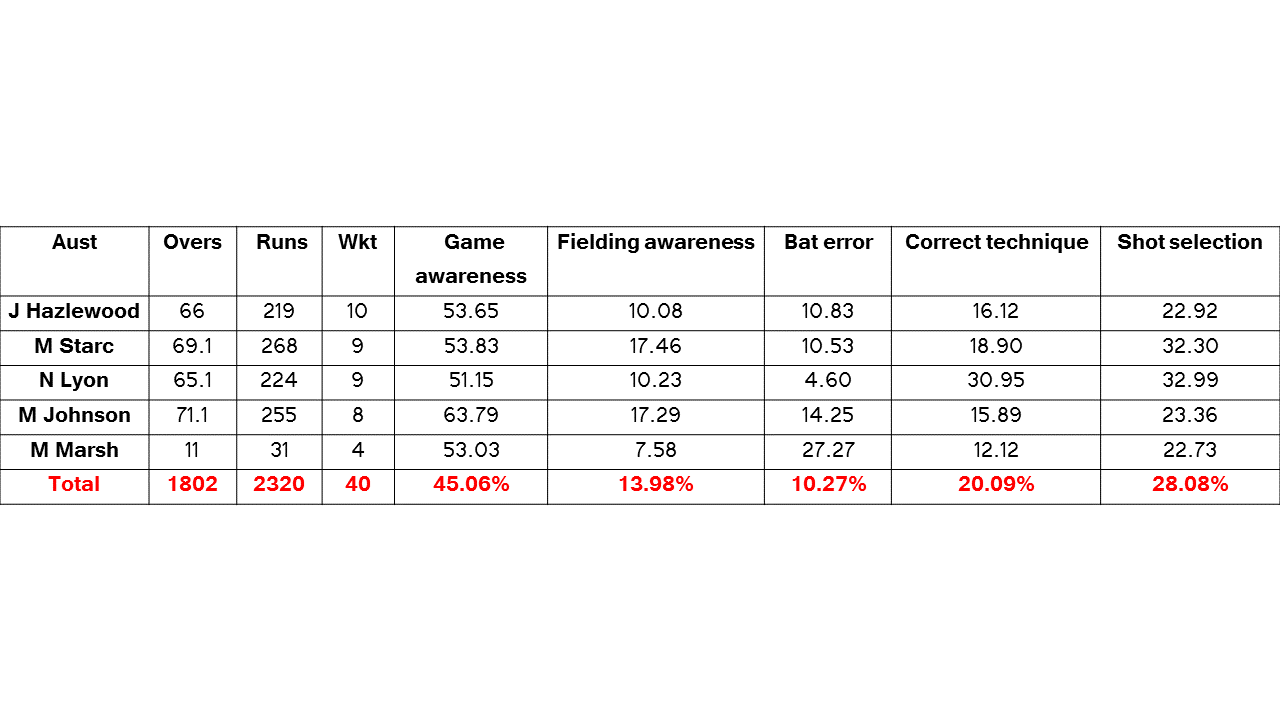Decision making skills in cricket is based on
What is decision making ? . In sport, when an athlete decides to play/act in particular way. It can be passing the ball to certain position, hitting the ball in certain area, bowling certain length, playing certain shots. All these act are based on three points below.
- Game awareness
- Skills/Technique
- Shot selection/Execution
- Game awareness –I believe it is not easy for a player to have game awareness at all the time, let alone every ball, and compared to other sport cricket is a mundane sport. Therefore it becomes interesting to see how much a player is aware of the game, and whether his awareness has led to successful execution at that particular moment. For me the key is the previous ball – how it was played or bowled, and compare that ball to the present one –as it would indicate whether he is aware of the game– its important that a player understands the match situation. A point is point is given for game awareness, and it can be for all three field(batsmen, bowlers, and fielders)
- Skills/Technique – what is a skills?. An act that constitutes execution. It can be either with the bat or with a ball, either for a batsman, bowler or fielder. At a very early age one learns basics of all skills. As they climb the ladder of their profession they imbibe few more. E.g every cricketer knows how to play a defensive shot, or a cover drive, or bowl a off stump/middle stump line and as well length. They hone these skills as they progress. These skills need to be practiced on a regular basis. Cricket has variety of skills, and one can cannot stop learning. Encompasses bowlers, fielders and batsmen. E.g Tillakarantne Dilshan must not have learned how to play the scoop paddle when he started his first class career, but advent of T20 made him learn this skill.
- Technique: what is a technique ? -For me a technique is how good one is able to adapt a particular skill- e.g playing a cover drive is a skill, and if you are able to play it against various type of bowling, various type of surface, situation, than that becomes a technique. An perfect example would be –a) Ponting knows how to play a cover drive, but when he is facing a spinner at the beginning of his innings, than he is not easy playing this shot- although if he is facing a fast bowler, than he would not hesitate to play – b)similarly Tendulkar know how to play a cover drive, but when he is facing a swing/fast bowler at the beginning of his innings, than he is not comfortable playing this shot, but he would certainly play against spin first up. A player learns his technique through experience. This experience is gained by playing number of matches, against various opponents, various situations….and sometimes we see him develop a technique through an innings. A point is given when correct skill/technique is executed irrespective of result(runs or wickets)
Shot selection: It is based on your skill/technique, game awareness and how played his previous delivery!. I believe muscle memory would help him recollect most of non-playing deliveries and his best shot selection. Yet it is how he adapts to the ones he was weaker to, and whether he is able to adapt and covert into scoring shot. A point is given for scoring a run provided his technique/skill is >50.00% – otherwise no points for edges, top edges, miscued shots, under edges, and other shots that could have cost batsman his wicket. Various players have different technique-and tail enders need to be considered as batsmen with limited technique, yet if they are able to fulfill their skills as a batsman and keep all the above in mind, than a point is rewarded.
At the end of an innings these points are divided by number of balls faced or bowled. The points given for game awareness is slightly tricky as it gets subjective and debatable, especially when you are rewarding points to batsmen. Although first class cricketers are trained professional, yet it is very difficult for them to be aware of the game all the time. Therefore the preceding act is important for every player, their decision to act on the next ball will depend on that, their skills, their technique, shot selection and execution.
- Batsmen are always looking at their own game, which in turn helps them to have hind sight on what is happening on the team score (game awareness), .Eg a well-executed cover drive fetching no runs gets a point- but a top-edge hook that fetches 6 runs, is not given a point irrespective quality of batsman
- Bowlers on the other hand always need to worry about their accuracy, whether they are spinning the ball, or bowling fast, swinging or just bowling length and line.
- Fielders on the other hand have different act. They cannot err in catches, misfields, as they don’t know when they will get another opportunity to act.
Below is stats analysis of ongoing Ashes series. These indicators reflect some fascinating outcomes. The percentile is divided by number of balls faced – although I have only included the top performer in these tables, but the last row is the team’s total(sum of all players).
I have attached a small video, as I thought it would give more clarity on how to analyse the game. courtesy Star Sports
Here is a video explaining the same using writing board.





